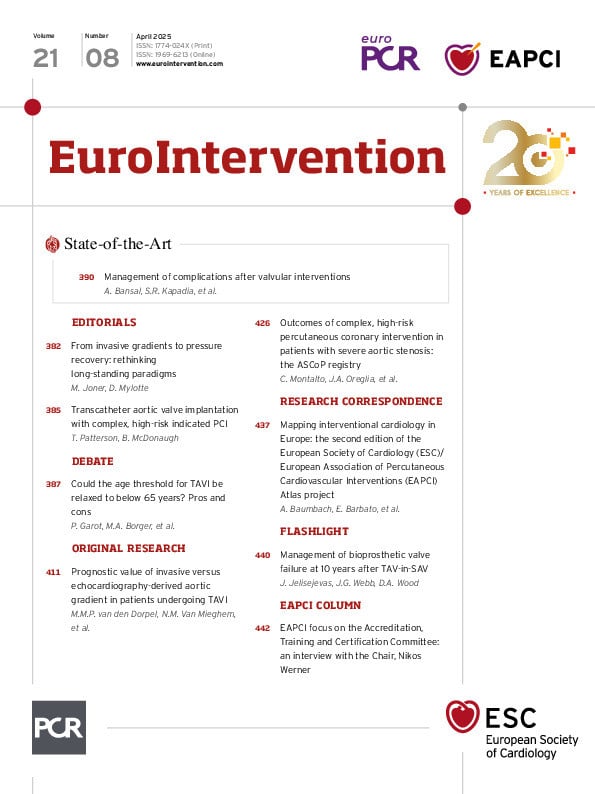What is the role of the EAPCI Accreditation, Training and Certification Committee?
Along with my Co-Chair, Francesco Burzotta, past Chair, Radoslaw Parma, and committee members, we play a crucial role within the EAPCI by ensuring high standards in education, training, and certification for interventional cardiologists across Europe. Our primary responsibilities include the following:
1. Accreditation of training centres – establishing criteria and guidelines for training centres in interventional cardiology to ensure quality education and hands-on experience.
2. Training standardisation – developing structured training programmes, curricula, and fellowships that align with European standards for interventional cardiology.
3. Certification of interventional cardiologists – overseeing certification processes that assess and validate the competency of cardiologists in percutaneous cardiovascular interventions.
4. Continuous Medical Education (CME) – organising and promoting courses, workshops, and educational initiatives to enhance professional development.
5. Quality assurance & guidelines implementation – ensuring that interventional cardiologists follow evidence-based practices and adhere to the latest European guidelines.
6. Collaboration with other societies – working closely with the European Society of Cardiology (ESC) and national societies to harmonise accreditation and training standards across Europe.
The Committee aims to improve patient care by fostering excellence in interventional cardiology through rigorous training, certification, and ongoing professional development.
How does the Committee benefit the community?
The Committee is responsible for generating the yearly multiple-choice questions for the EAPCI exam, which takes place in autumn each year. The members develop new questions based on recent guidelines and PCR-EAPCI textbook recommendations, set up the whole exam, and evaluate the results. Creating a well-balanced, scientifically sound exam requires substantial work, and it is highly recognised by the candidates. Passing the theoretical test allows the applicant to proceed with the country-specific practical training. We are currently working on pilot projects with national societies and working groups, aiming to incorporate the EAPCI exam into national training.
How does the Committee work with the other EAPCI Committees?
EAPCI Committees are strongly committed to collaboration. Every Chair and Co-Chair maintains contact with the other Committees. This collaboration includes, for example, multiple-choice question workshops.
Who should consider EAPCI Certification?
I personally believe that EAPCI Certification is an important qualification for all young interventionalists across Europe and the world. It shows that physicians have passed a well-recognised theoretical exam and have completed structured practical training within their home countries. It provides a unique standard within our subspeciality in Europe.
How can EAPCI members become involved in the work of the Committee?
Each term, the EAPCI invites its members to volunteer for engagement within the Committees. Everyone dedicated to accreditation, training, and certification is very welcome to apply.

